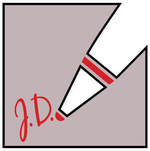|
Erica Loop reports:
"While it's unlikely that your little learner has the ability to write a book report or read a book by herself, she can begin developing early literacy skills. Keep in mind that teaching your 4-year-old to read and write won't happen overnight. Instead, it is a gradual process of skill building...Teach your budding reader [how] to recognize the letters. Chances are that your 4-year-old already knows the alphabet. If that's not the case, use a rhyme or the 'Alphabet Song' to help him remember the letters...Make an alphabet strip out of cardboard and markers, writing each letter in a bold color to ensure that your little one has mastery of letter recognition. Point to each letter and say the name. Have your child repeat the letter name. When she gets the hang of that, add in a lesson on sound recognition. Say the letter name and have your preschooler make the sound...Read age-appropriate books together. Choose a variety of books that feature pictures and words...Ask your child to point out specific letters and match the sounds, such as 'B' is for 'ball.'...Continue reading the same books repeatedly. This will give your child the opportunity to become familiar with short words such as 'cat' or 'dog.' While your preschooler most likely won't have the skills to read all of the words in the picture books, he might have the ability to repeat words that he sees regularly and say the beginning sounds of the words...Continue the literacy development with a writing lesson or two as you are helping your preschooler read. Make a deck of alphabet cards that she can trace as she is beginning to learn how to write...Write each capital letter of the alphabet on separate pieces of cardboard. Make the letter bold and thick enough for the child to see easily. Place a thin piece of white copier paper over the cardboard. The letter will show through. Give your child a pencil or crayon and have him trace the letter on the white paper. Repeat this step with new pieces of paper until your child gets the hang of the letters...Give your child lined paper and help him write the letters with a thin marker, crayon or pencil. Continue with this exercise until your child feels comfortable writing at least some -- such as five or six -- letters. It's not likely that your 4-year-old will master writing the entire alphabet right away. Start with simple words or her name...Give your little one plenty of opportunities to engage in writing and reading related play. Stash notepads, notebooks, pencils and crayons around the house on play tables or the kitchen table. Encourage your child to write, or scribble, to his heart's content. Keep your home library full of picture books. [M]ake reading part of play time by having her take a break from the piles of toys and pick up a book. While reading to your child is invaluable, he can browse the pages by himself as well. Talk to your child regularly, introducing new vocabulary words as you do...Avoid dumbing down early literacy activities. Don't use baby talk or overly juvenile versions in lieu of the real vocabulary." Leave a Reply. |
Writing and editing can be pretty rigorous processes if you want to do them well, but that's what this page is here for. Check out the latest tips here. Archives
June 2024
CategoriesJ.D. Parsons
Author SEO Writer Proofreader Editor Internet Researcher |
Proudly powered by Weebly
 RSS Feed
RSS Feed
